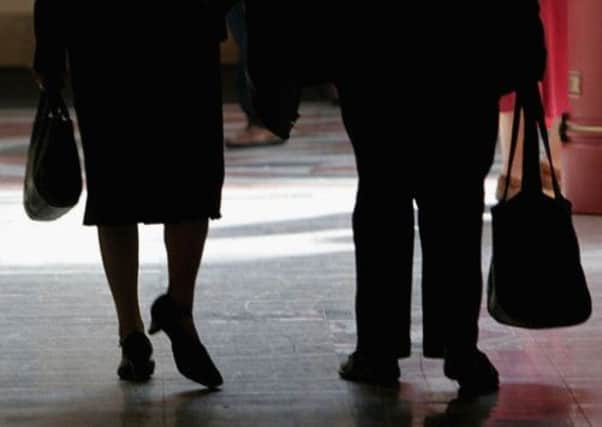Leaders: Pensions questions must be answered


The paper from the Institute of Chartered Accountants of Scotland (Icas), published today, dramatically changes this view. Not only does it set out the enormity of the funding issues involved, but it also poses urgent and searching questions for the Scottish Government.
Few matters are more important to people than pensions and the security of arrangements surrounding them. The Icas paper sets out starkly what pensions arrangements an independent Scotland would need to provide. It examines, in particular, the legacy issues that would need to be addressed in relation to the state pension, public sector pensions and other work-based pensions.
Advertisement
Hide AdAdvertisement
Hide AdThe sums involved in terms of public expenditure are colossal. Who would make state pension payments in an independent Scotland – and take responsibility for entitlements built up prior to independence? Many state pension payments are unfunded and made from general taxation, while entitlement is built up over many years. Responsibility for the “accrued” entitlement of those of working age living in Scotland to a state pension would be a major feature of any formal negotiations between the Scottish and the rest of the UK governments.
Not least of the issues is working out Scotland’s share of unfunded public sector liabilities. As at the end of March 2011, these stood at £893 billion. How would the opening balance sheet of an independent Scotland look once provision is made for its share of these? For schemes which are Scottish-based, the Scottish Public Pensions Agency has recently identified unfunded liabilities of £66bn. Detailed work would be needed to identify additional liabilities relating to Scottish-based members of UK-wide public sector schemes.
Also to be addressed are arrangements for the regulation and protection of private sector schemes. While it would make sense to stick with existing UK governance in the early years, the protection of defined benefit arrangements and the future of the UK Pensions Protection Fund would require early resolution.
The Icas paper also points to the implications for schemes which currently operate UK-wide. Under EU law, schemes which operate in more than one country must fund their liabilities in full and any underfunding must be rectified immediately rather than through staged recovery. “Dealing with underfunding” would have major cost and cash flow implications for employers with underfunded cross-border schemes.” Icas urges the development of a robust plan for Scotland’s pensions future before the referendum. We agree: these are urgent and critical questions everyone in Scotland saving for a pension or currently in receipt of one will demand to be addressed.
Museum must rethink wreckage plan
There is constant pressure on museums today to be “relevant” and provide resonant historical items for public display. But what possible public interest would be served by the Riverside Museum in Glasgow obtaining a part of the wreckage of the Pan Am jumbo jet from the Lockerbie bombing to put on display? The museum says it hopes some of the fuselage would be made available “to help us to tell this important story”. But this appalling and tragic story has been told many times, and a public display of the wreckage would add nothing to our understanding of the bombing. That ground has been gone over in official inquests, inquiries and not least in the trial of the convicted bomber Abdelbaset Ali Mohmed al-Megrahi.
It is hard to avoid the suspicion that such a display, offensive as it would almost certainly be to many of the families of the victims, would pander to the ghoulish and to no evident public, educational or historical benefit. What happened at Lockerbie was a calculated and murderous act in which all 243 passengers and 16 crew members were killed, together with 11 people on the ground. It was the subject of a three-year joint investigation by Scottish police and the US Federal Bureau of Investigation and murder warrants were issued.
Were parts of the wreckage to be acceptable as a fitting museum piece, what other ghoulish and macabre artefacts would not now crowd our museums? What would be to stop ghastly artefacts from other appalling deaths being deemed fit exhibits for public delectation? This proposal is both offensive and an abuse of the function and purpose of a museum. The Riverside Museum should think again.